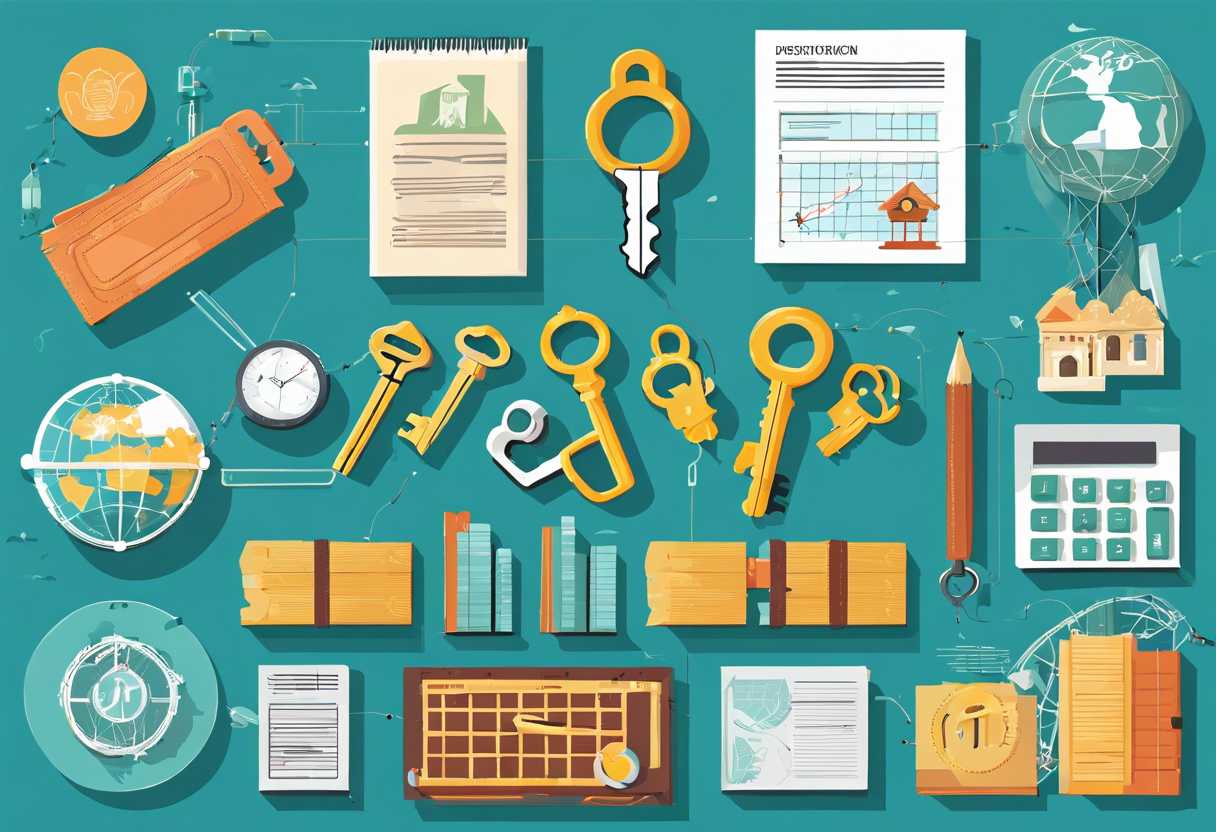A long-range budget is a financial plan that extends beyond the typical one-year period, providing a comprehensive overview of an organization’s financial goals and strategies for the future. In this blog post, we will delve into the importance of long-range budgeting, the key components of a comprehensive long-range budget, the benefits of implementing a long-range budgeting strategy, the challenges and solutions in long-range budgeting, and tips for creating and managing a successful long-range budget. Understanding the significance of long-range budgeting and its various components is crucial for organizations to effectively plan for the future and achieve their financial objectives. So, let’s explore the world of long-range budgeting and its impact on financial planning and management.
Understanding the Importance of Long-Range Budgeting
The Benefits of Long-Range Budgeting
Long-range budgeting is a crucial aspect of financial planning for any organization. By forecasting and planning for the future, businesses can make informed decisions and allocate resources effectively. This type of budgeting allows for a more strategic approach to financial management, as it takes into account long-term goals and objectives.
Long-range budgeting provides stability and predictability, which are essential for sustainable growth and success.
Strategic Decision Making
Long-range budgeting enables businesses to make strategic decisions based on future financial projections. By having a clear understanding of expected revenues and expenses over an extended period, organizations can identify potential risks and opportunities. This allows for proactive decision making and the ability to adapt to changing market conditions.
With long-range budgeting, businesses can align their financial resources with their long-term strategic plans, ensuring that they are well-positioned for future growth and success.
Enhanced Financial Stability
Long-range budgeting promotes financial stability by providing a roadmap for managing resources and investments. It helps businesses avoid short-term financial crises and ensures that they have the necessary funds to support their long-term objectives. By identifying potential cash flow issues and capital requirements in advance, organizations can take proactive measures to mitigate risks and maintain financial stability.
Long-range budgeting is essential for ensuring that businesses can weather economic downturns and market fluctuations, ultimately safeguarding their financial health.

Key Components of a Comprehensive Long-Range Budget
Clear Financial Goals
One of the key components of a comprehensive long-range budget is setting clear financial goals. This involves identifying both short-term and long-term financial objectives, such as saving for retirement, purchasing a home, or funding a child’s education. By clearly defining these goals, individuals can create a budget that aligns with their financial aspirations and helps them stay on track to achieve them.
Detailed Expense Tracking
Another essential component of a long-range budget is detailed expense tracking. This involves meticulously recording all income and expenses, including fixed costs like rent or mortgage payments, utilities, and insurance, as well as variable expenses such as groceries, entertainment, and travel. By tracking expenses, individuals can gain a clear understanding of their spending habits and identify areas where they can cut back to save more money.
Contingency Planning
Contingency planning is a crucial aspect of a comprehensive long-range budget. This involves setting aside funds for unexpected expenses, emergencies, and unforeseen circumstances. By establishing an emergency fund, individuals can avoid dipping into their long-term savings or going into debt when unexpected financial challenges arise. This component provides a safety net and peace of mind, ensuring that individuals can stay on track with their long-range financial goals.

Benefits of Implementing a Long-Range Budgeting Strategy
Improved Financial Planning
Implementing a long-range budgeting strategy allows businesses to forecast their financial needs and plan for the future more effectively. By taking into account long-term goals and potential challenges, companies can make more informed decisions about investments, expenses, and resource allocation. This proactive approach to financial planning can help businesses avoid cash flow issues and make strategic financial decisions that support long-term growth and sustainability.
Enhanced Resource Allocation
Long-range budgeting enables businesses to allocate resources more efficiently by identifying areas of potential overspending or underinvestment. By analyzing historical data and future projections, companies can prioritize spending on initiatives that align with their long-term objectives and reallocate resources from less critical areas. This approach helps businesses optimize their financial resources and maximize the impact of their investments, ultimately leading to improved profitability and performance.
Increased Stakeholder Confidence
By implementing a long-range budgeting strategy, businesses can demonstrate a commitment to responsible financial management and long-term sustainability. This can help build trust and confidence among stakeholders, including investors, lenders, and employees, who are reassured by the company’s proactive approach to financial planning. As a result, businesses may find it easier to secure funding, attract top talent, and foster stronger relationships with key stakeholders, ultimately contributing to their long-term success.
Challenges and Solutions in Long-Range Budgeting
Forecasting Accuracy
One of the biggest challenges in long-range budgeting is achieving forecasting accuracy. Many factors can impact the accuracy of financial forecasts, including market volatility, economic conditions, and unforeseen events. To address this challenge, organizations can implement advanced forecasting techniques, leverage historical data, and use scenario planning to account for potential changes in the business environment. Additionally, utilizing financial modeling software can help improve the accuracy of long-range budget forecasts.
Resource Allocation
Another challenge in long-range budgeting is effectively allocating resources to meet long-term financial goals. This involves balancing short-term needs with long-term objectives, optimizing capital allocation, and prioritizing investments. To overcome this challenge, organizations can develop a strategic resource allocation framework that aligns with their long-range budgeting goals. This may involve conducting cost-benefit analyses, evaluating investment opportunities, and implementing performance metrics to track resource utilization.
Stakeholder Communication
Effective communication with stakeholders is essential for successful long-range budgeting. This includes engaging with internal teams, executives, investors, and other key stakeholders to ensure alignment and support for long-term financial plans. To address this challenge, organizations can establish clear communication channels, provide regular updates on budget performance, and involve stakeholders in the budgeting process. Utilizing financial reporting tools and dashboards can also enhance transparency and facilitate meaningful discussions with stakeholders.
Tips for Creating and Managing a Successful Long-Range Budget
Set Clear Financial Goals
One of the first steps in creating a successful long-range budget is to set clear financial goals. Whether it’s saving for a down payment on a house, paying off debt, or building an emergency fund, having specific goals will help you stay focused and motivated. *It’s important to be realistic about your goals and to prioritize them based on their importance and urgency.*
Track Your Income and Expenses
Tracking your income and expenses is essential for creating and managing a successful long-range budget. Start by listing all sources of income and then categorize your expenses, such as housing, transportation, groceries, and entertainment. *Use a budgeting tool or spreadsheet to track your income and expenses, and regularly review your spending to identify areas where you can cut back.*
Build in Contingencies
When creating a long-range budget, it’s important to build in contingencies for unexpected expenses or changes in income. *Set aside a portion of your income for an emergency fund, and consider including a buffer in your budget for unexpected costs.* Having contingencies in place will help you avoid going off track when unexpected financial challenges arise.
| Financial Goals | Tracking Income and Expenses | Building Contingencies |
| Save for a down payment on a house | Use a budgeting tool or spreadsheet | Set aside a portion of income for an emergency fund |
| Pay off debt | Regularly review spending | Include a buffer for unexpected costs |
| Build an emergency fund |
By following these tips and staying disciplined with your budget, you can create and manage a successful long-range budget that helps you achieve your financial goals.
Conclusion
In conclusion, a long-range budget is a crucial tool for businesses to plan and manage their finances effectively. Understanding the importance of long-range budgeting allows organizations to make informed decisions and allocate resources strategically. The key components of a comprehensive long-range budget, such as revenue projections, expense forecasts, and cash flow analysis, provide a holistic view of the financial landscape.
The benefits of implementing a long-range budgeting strategy are numerous, including improved financial stability, better resource allocation, and enhanced decision-making. However, it’s essential to acknowledge the challenges associated with long-range budgeting, such as uncertainty and changing market conditions. By adopting proactive solutions, such as regular reviews and scenario planning, businesses can mitigate these challenges and adapt to evolving circumstances.
Furthermore, the tips for creating and managing a successful long-range budget, such as setting realistic goals, involving key stakeholders, and leveraging technology, are instrumental in achieving long-term financial success. By embracing these best practices, organizations can optimize their budgeting process and drive sustainable growth.
As you embark on your long-range budgeting journey, remember that it’s a continuous process that requires dedication and flexibility. By staying committed to your financial goals and adapting to changing dynamics, you can maximize the potential of your long-range budget and steer your business towards long-term success.
Take the first step towards implementing a robust long-range budgeting strategy today and unlock the full potential of your organization’s financial future.

